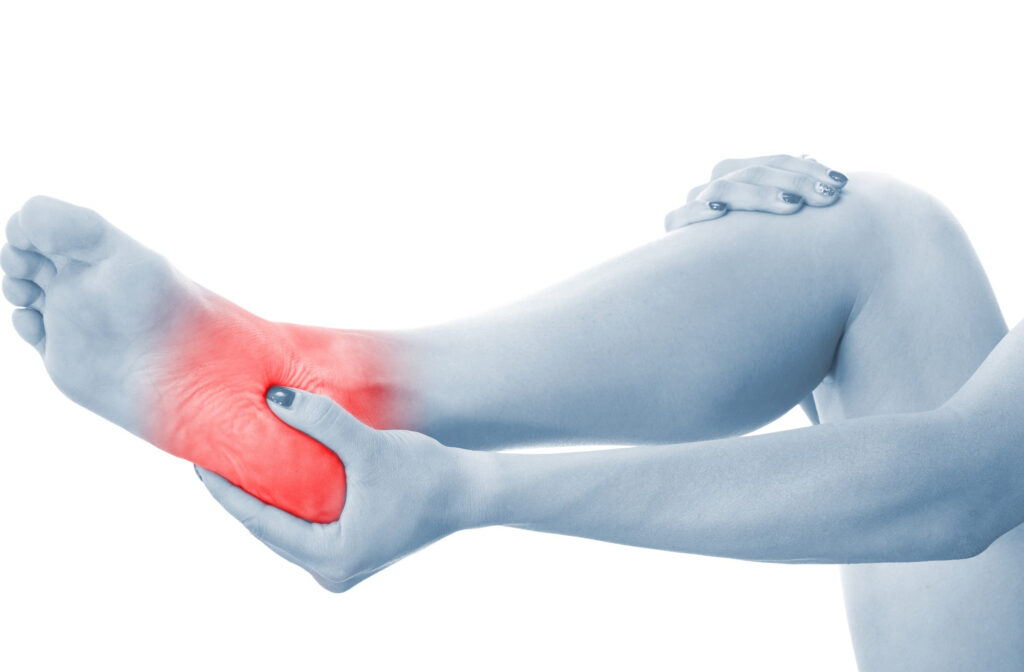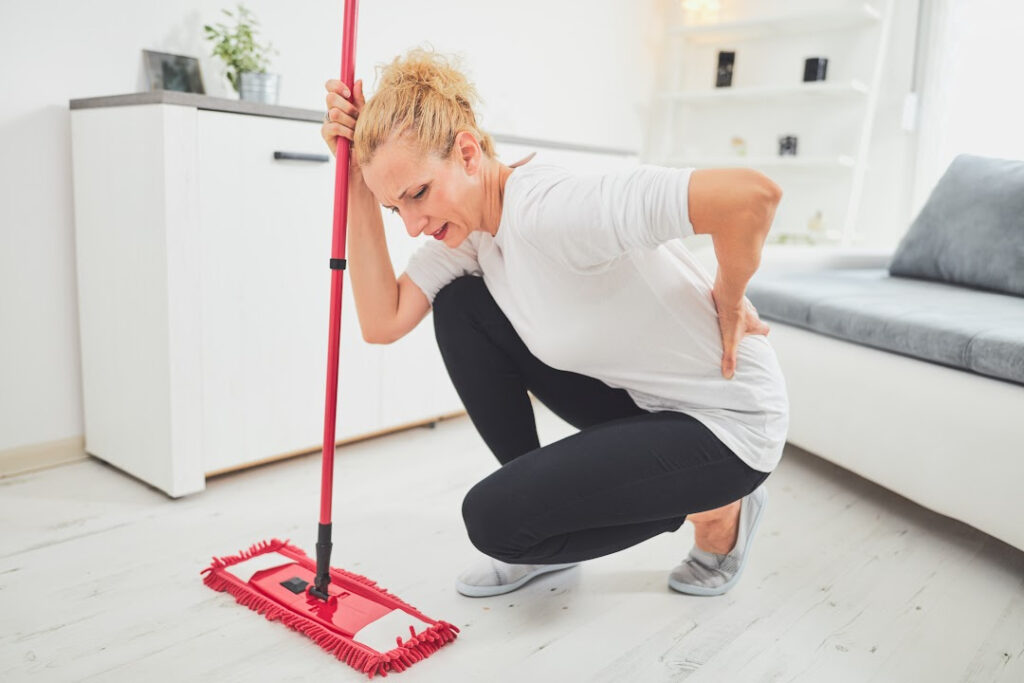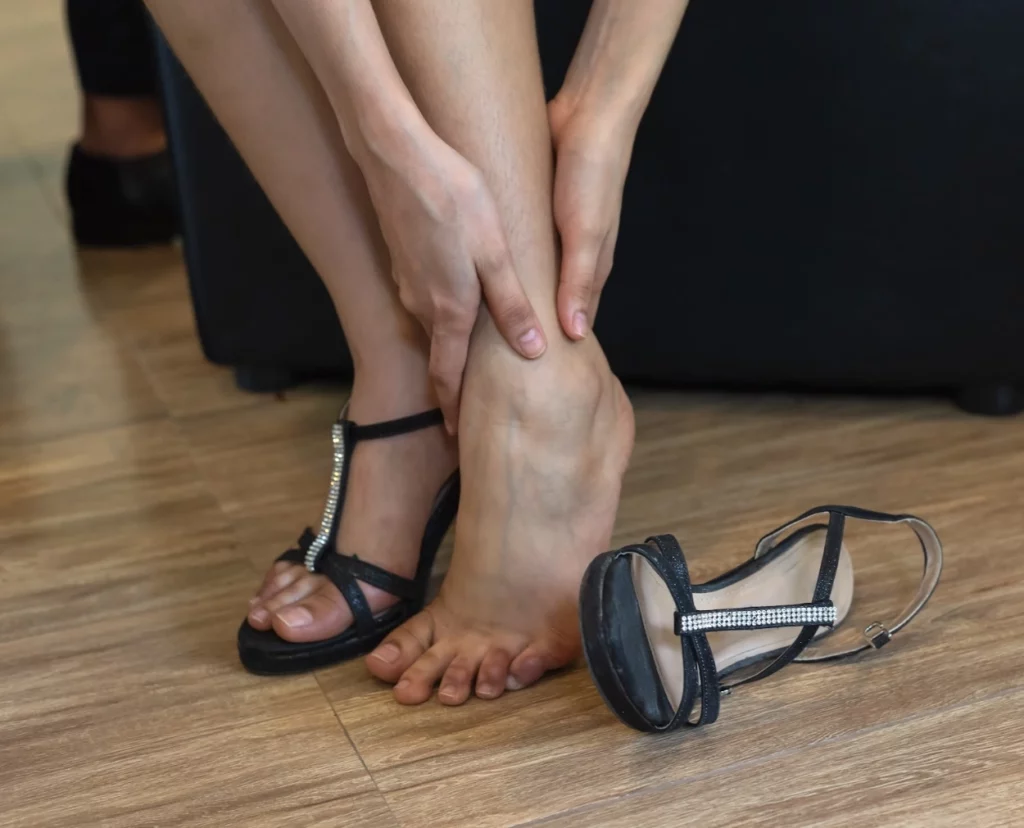
Chiropractic Care Has Long-Term Benefits
 You don’t need to experience a catastrophic injury to begin chiropractic care. There are plenty of reasons to include chiropractic adjustments in your self-care routine that go beyond healing immediate injuries and natural pain relief. Chiropractic can provide longevity, proactive injury prevention, improved sleep, and an overall feeling of wellness.
You don’t need to experience a catastrophic injury to begin chiropractic care. There are plenty of reasons to include chiropractic adjustments in your self-care routine that go beyond healing immediate injuries and natural pain relief. Chiropractic can provide longevity, proactive injury prevention, improved sleep, and an overall feeling of wellness.
What are some of these benefits, more specifically?
Improved mood and increased energy
Those who have experienced a chiropractic adjustment know the feeling of relief after an appointment. You sleep better, your joints feel looser, and your body can feel lighter. The improvement in mood and energy allows for less stress and better productivity.
Natural pain relief
This goes without question. Most people arrive at a chiropractic clinic after a sustained injury or for relief from chronic conditions like sciatica, migraines, or arthritis. Chiropractic care has a reputation for improving the quality of life of those living with chronic pain. However, preventative care is the goal, so receiving chiropractic care before the onset of pain-inducing conditions or accidents will always improve your results and overall quality of life.
Increased flexibility and range of motion
One thing patients love about chiropractic care is the restorative effect adjustments and care plans can have on your quality of life. Aging affects us all, and over time, our joints can wear down, muscles become tighter, and some experience bone density loss. The realignment of the spine relieves stress on joints and muscles, allowing you to remain more agile. Better agility equates to fewer everyday injuries we commonly see in the aging population. Remaining active safely, as you know, dramatically improves longevity. Aging gracefully can happen for you.
Improved athletic performance
We aren’t all athletes, but the ability to maintain athletic performance is something that is vitally important to many. There is a reason professional athletes have a chiropractic team on staff, but even those of us who want to maintain our everyday level of athletic performance recreationally require the expertise and knowledge of a chiropractor. The slightest adjustment can improve overall performance, even for those of us who participate in recreational forms of sports.
Chiropractic care offers several long-term benefits
Chiropractic care often focuses on your spine but also has the capacity to focus on other parts of your body depending on the particular issue you’re dealing with. It’s never a one-size-fits-all scenario, and treatment plans are as individual as the person being treated.
Self-care is more than bubble baths and weekend trips, although I would never suggest removing these activities from your routine. Your day-to-day care, including meeting your medical and chiropractic care needs, sets the foundation for optimal self-care. The goal is always longevity, proactive injury prevention, improved sleep, and an overall feeling of wellness. This can be achieved through chiropractic care.
Connect with us to learn how chiropractic care can have long-term benefits for you.
Ankle Sprains
An ankle sprain is not only painful, it can be a long-term inconvenience. An ankle sprain in the snow and ice adds another element of concern when you are afraid of further injury or re-injuring a healing sprain. An ankle sprain in the other seasons can prevent you from being able to participate in activities you may enjoy or require to maintain your job or your household. The sprains can add stress to your day and the rest of your body, which will quickly compensate for your ankle’s lack of mobility.
Patients are often shocked to discover that a sprained ankle can lead to neck soreness and headaches!
What Does This Mean?
 It means that your spine, hip, legs, abdomen, and shoulder/neck can become stressed when you do everything to avoid the pain of the ankle.
It means that your spine, hip, legs, abdomen, and shoulder/neck can become stressed when you do everything to avoid the pain of the ankle.
In short, take your time and rest, especially when you have a million other things you would rather be doing.
If you have sprained your ankle, we will ensure you are well-equipped with all the tools you need to ensure you are safe and educated. We will also test the grade of the sprain and move forward with treatment options accordingly.
There are three grades of ankle sprains. Each classification will help you understand the nature of your injury and the best treatment options.
The Three Grades of An Ankle Sprain, Explained
An ankle sprain is an injury that involves ligaments that are stretched or torn. With your ankle, this can happen to the joint’s interior or exterior. It could be an inversion or an eversion sprain; the discomfort and urgency to allow your ankle to heal without further stress or injury is essential.
Grade 1: This is where the ligaments have not been torn but have stretched further than they should have. Symptoms can include discomfort when jogging, jumping, and sometimes even walking. The ligaments may feel stiff and unstable, and there could be some mild swelling.
Grade 2: This is the most common type of sprain we see. The ligament is partially torn, which can be moderately uncomfortable or painful. A grade 2 sprain can be painful when walking, and there is likely a moderate level of swelling and bruising.
Grade 3: This is the most severe, and it involves a complete ligament tear. The pain is severe, even when not standing on it, and noticeable swelling/bruising will occur. The level of pain makes it very difficult to use.
What’s Next?
Your ankle plays a vital role in your mobility; no one understands this better than a Chiropractor and the individual experiencing the sprain. The truth is that most sprains can begin to heal nicely with rest, ice, and elevation. But to speed up the recovery process and ensure you aren’t doing further damage, we would develop an individualized treatment plan to not only help with healing but also move forward with a prevention plan. This plan will include adjustments, light stretches, and strengthening exercises.
Ultimately, a sprained ankle at any time of the year is a huge, painful, and sometimes long-lasting inconvenience. Luckily, we are here help you ensure your ankles remain solid and mobile so you can enjoy the changing seasons and all your activities, free from stress!


 What starts as an occasional sharp pain that suddenly develops in the heel of your foot can become a nagging, constant pain that causes you to limp or avoid walking altogether. If you have experienced this, I’m sure your healthcare team has looked into a plantar fasciitis diagnosis. At a glance, it can sound like a minor injury. Still, the long-term effects of this painful condition can seriously interfere with your quality of life.
What starts as an occasional sharp pain that suddenly develops in the heel of your foot can become a nagging, constant pain that causes you to limp or avoid walking altogether. If you have experienced this, I’m sure your healthcare team has looked into a plantar fasciitis diagnosis. At a glance, it can sound like a minor injury. Still, the long-term effects of this painful condition can seriously interfere with your quality of life.  Depending on where you are in the world, it seems like winter is on its way out. Here are five ways to ensure your spring cleaning is seamless. It is time to purge, crack open the windows, and get into those hard-to-reach corners. What’s spring cleaning without moving furniture and getting right in there? Am I right?
Depending on where you are in the world, it seems like winter is on its way out. Here are five ways to ensure your spring cleaning is seamless. It is time to purge, crack open the windows, and get into those hard-to-reach corners. What’s spring cleaning without moving furniture and getting right in there? Am I right? 
 We can help treat falls on ice and slick surfaces, snow sports injuries, and other joint and muscle stiffness and pain, whether as your primary source of treatment or in accompaniment to traditional medicine.
We can help treat falls on ice and slick surfaces, snow sports injuries, and other joint and muscle stiffness and pain, whether as your primary source of treatment or in accompaniment to traditional medicine. Sore Neck or Back?
Sore Neck or Back?
 The following explains how we can help treat femoroacetabular impingement.
The following explains how we can help treat femoroacetabular impingement. The good news is a Chiropractor can help alleviate many of the symptoms associated with spinal stenosis. The following explains what spinal stenosis is and how Chiropractors like myself can help treat it.
The good news is a Chiropractor can help alleviate many of the symptoms associated with spinal stenosis. The following explains what spinal stenosis is and how Chiropractors like myself can help treat it.
 The temperature is dropping, and the damp, cooler weather can mean many things to our bodies. The excitement of winter activities like ice skating and tobogganing begins. For some, there are winter fairs and markets. Others prepare for the holidays and spend time indoors with loved ones and warm blankets. Whatever your winter activity or inactivity, there is always a reason to ensure you regularly visit your us.
The temperature is dropping, and the damp, cooler weather can mean many things to our bodies. The excitement of winter activities like ice skating and tobogganing begins. For some, there are winter fairs and markets. Others prepare for the holidays and spend time indoors with loved ones and warm blankets. Whatever your winter activity or inactivity, there is always a reason to ensure you regularly visit your us.  Let someone know where you plan to hike. Tell someone where you’ll be and how long you plan to be out. Please share your location. It’s unlikely you will get lost, or things will go awry, but it is better to be safe than sorry. It is a quick and straightforward solution, especially when sharing your location and checking in with a friend or family member.
Let someone know where you plan to hike. Tell someone where you’ll be and how long you plan to be out. Please share your location. It’s unlikely you will get lost, or things will go awry, but it is better to be safe than sorry. It is a quick and straightforward solution, especially when sharing your location and checking in with a friend or family member.
 Every year, we see an influx of patients who have injured themselves while completing their annual fall yard cleanup. Pruning trees, cleaning gutters, raking leaves, and general bending and lifting can create a perfect environment for back injuries, strains, sprains, or falls. The general use of leaf blowers, rakes, ladders, and carrying heavy bags requires a thoughtful plan to prevent injuries, and you know, as Chiropractors, we like to focus on prevention!
Every year, we see an influx of patients who have injured themselves while completing their annual fall yard cleanup. Pruning trees, cleaning gutters, raking leaves, and general bending and lifting can create a perfect environment for back injuries, strains, sprains, or falls. The general use of leaf blowers, rakes, ladders, and carrying heavy bags requires a thoughtful plan to prevent injuries, and you know, as Chiropractors, we like to focus on prevention! Even if you are in a position to move around for some of the day, your body requires stretching. Long periods of sitting or standing will affect our circulation; this can cause a deterioration of muscle mass, ultimately affecting systems of your body.
Even if you are in a position to move around for some of the day, your body requires stretching. Long periods of sitting or standing will affect our circulation; this can cause a deterioration of muscle mass, ultimately affecting systems of your body. New year’s resolutions can be great. They also create a type of urgency that is challenging to maintain. When it comes time to create new habits or routines, the best way to do this is slowly. Managing your expectations is key. Start by going to the gym once a week for 30-45 minutes, or join a class. Building your motivation over time will allow you to develop the discipline you need to maintain new routines. As you already know, the more you workout, the better you feel and the more likely it is that will want to continue to feel good. The frequency will seemingly increase on it’s own, as will the progress you will see and feel in your body.
New year’s resolutions can be great. They also create a type of urgency that is challenging to maintain. When it comes time to create new habits or routines, the best way to do this is slowly. Managing your expectations is key. Start by going to the gym once a week for 30-45 minutes, or join a class. Building your motivation over time will allow you to develop the discipline you need to maintain new routines. As you already know, the more you workout, the better you feel and the more likely it is that will want to continue to feel good. The frequency will seemingly increase on it’s own, as will the progress you will see and feel in your body. 
 Before you get out the heels for everyday living, having these five facts about heels is essential.
Before you get out the heels for everyday living, having these five facts about heels is essential.
 Remain as active as you normally would. Immediately following an adjustment is not the time to start a new sport or dive into a heavy workout, but remaining sedentary when you are an active person can cause your muscles to tighten. In other words, you can feel stiff if you don’t resume an average or moderate amount of movement.
Remain as active as you normally would. Immediately following an adjustment is not the time to start a new sport or dive into a heavy workout, but remaining sedentary when you are an active person can cause your muscles to tighten. In other words, you can feel stiff if you don’t resume an average or moderate amount of movement. Water activities can increase your heart health without too much friction on your joints, muscles, and ligaments—the paddling motion paired with the balance required to tone almost your entire body, particularly your core.
Water activities can increase your heart health without too much friction on your joints, muscles, and ligaments—the paddling motion paired with the balance required to tone almost your entire body, particularly your core.
 Some of the most common areas of relief through Chiropractic care include:
Some of the most common areas of relief through Chiropractic care include: Gardening can bring joy and healthy productivity to our lives, so I would never suggest eliminating it. Gardening season does arrive with increased incidents of neck strain and back injuries, mainly due to overexertion and repetitive movements.
Gardening can bring joy and healthy productivity to our lives, so I would never suggest eliminating it. Gardening season does arrive with increased incidents of neck strain and back injuries, mainly due to overexertion and repetitive movements.